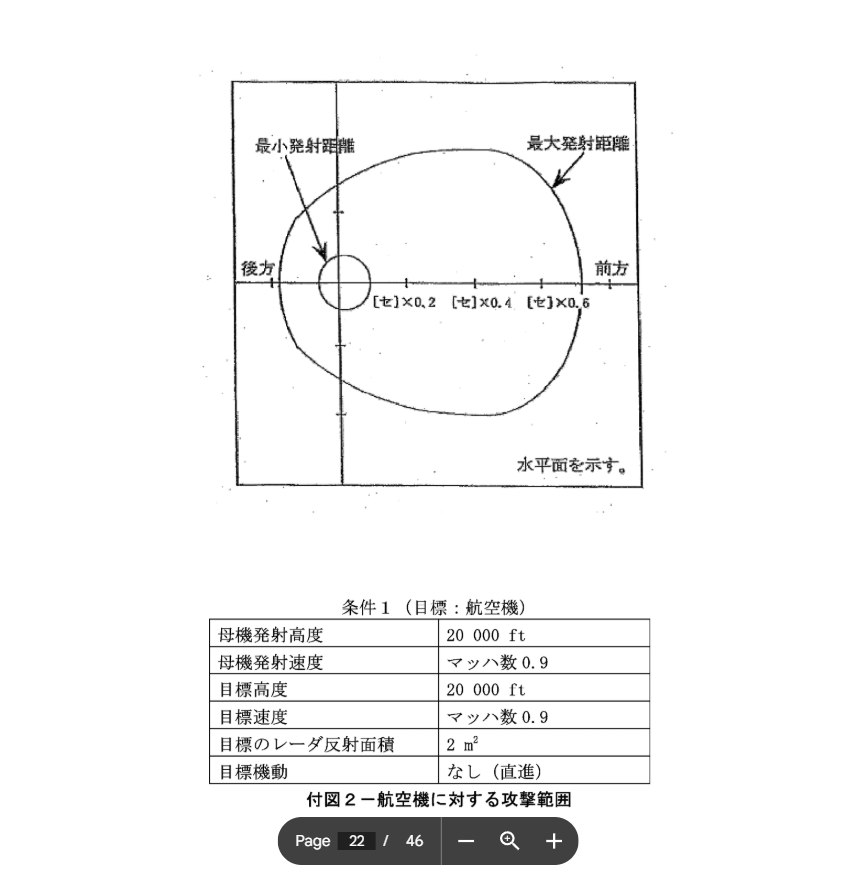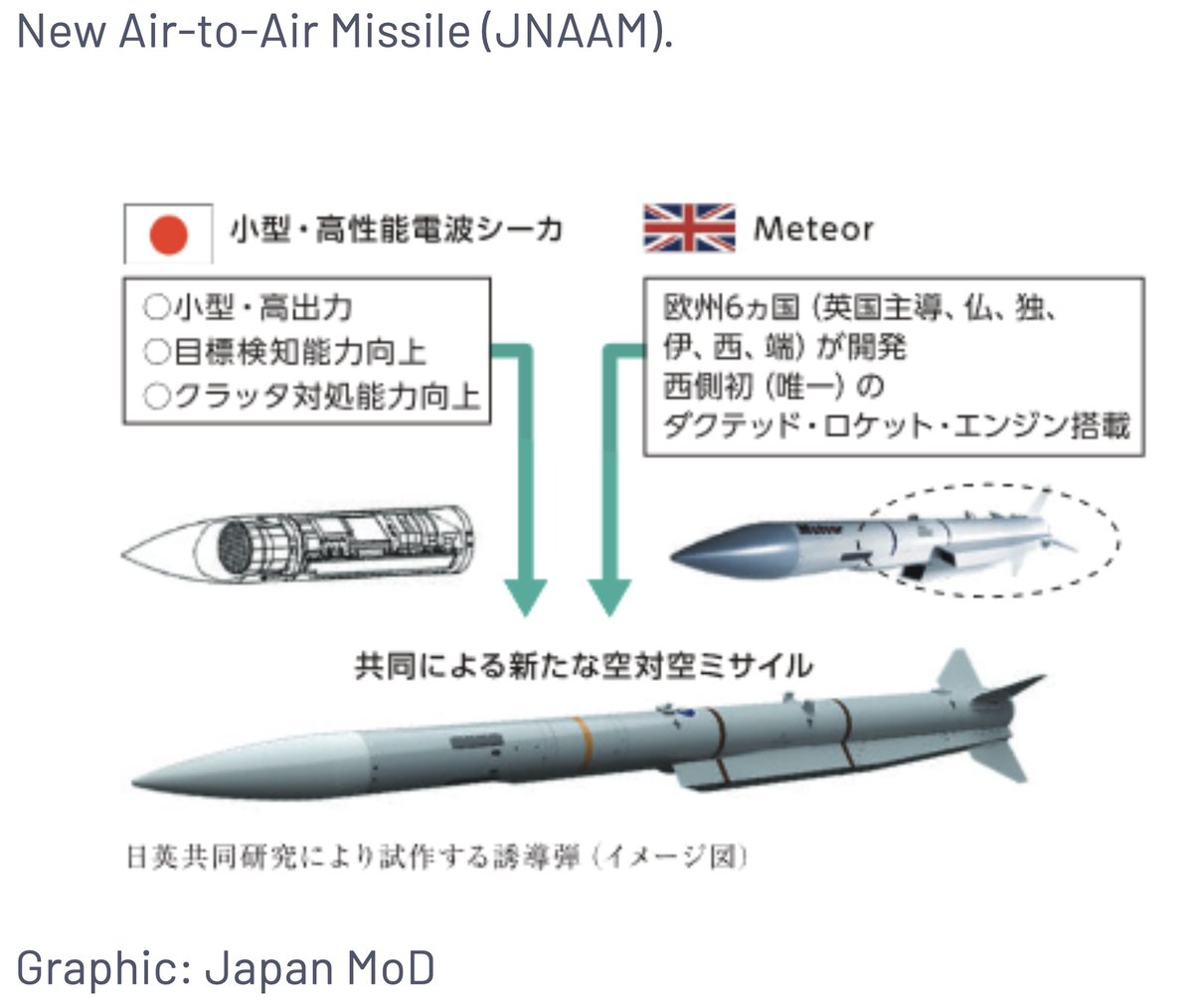Ahh i see that makes more sense aha
what on earth is its minimum engagement range, for example r-77/771 is 300m rear aspect
Its a lot, lemme grab the images, in some cases like against ASMs/crusie missiles almost half of its max effective range. (It’s not nearly that much against planes, but it’s still a considerable distance, easily in the kilometers)

(ヤ is a value representing a range stored in an annex file which I do not have because the annex file is classified.)
We can see that at that almost 1/7th of the missile’s range is it’s minimum engagement range. And this is for the 4B (Given they have the same motor and warhead/fuse, the 4 and 4B should have the same minimum engagement range). Given what we know, the minimum engagement range from this appears to be atleast 10km.
(Also 4 seconds is the minimum arming time on the fuse, its arming time goes up to 6 seconds)
what about guidance delay?
I’ve always wondered why some missiles have such long arming times… like why not have an arming delay of sub 2 seconds? surely thats enough time to clear the rail/pose no risk to the plane
From both footage analysis and the patent (unreliable as the patent numbers may be), it seems it’s guidence delay starts as low as 0.25s and ramps up over the next quarter a second. Comparable to it’s current implementation of fixed starting at 0.31.
I believe it to be part of the safety system in case of misfires, Japan seems to be very very careful with how their weapons are armed to avoid even the slimest possibility of them blowing up in the proximity of something they don’t want.
Seeker rights and thereby the threat to France’s workshares is strongly thought to be the reason that the Japan-UK JNAAM (current gen Meteor with AAM-4B) was VETO’d by France, unfortunately France hasn’t offered other partners a similar plug and play solution to swap the seekers yet…
But I’m hoping Meteor MLU has a quick turnaround time and the seekers can then be swapped. I’m not sure what they’ll be used on.
With the UK having its own other next-gen ARH programme with Japan for Tempest, and the US deliberately delaying base meteor integration on F-35 what the Meteor MLU is expected to serve on isn’t quite clear.
? I have no clue how you assume that and how that would be on France since Japan to start with is not in the meteor program nor how you seem so sure that Japan solution would be “plug-and-play” and it’s not a common thing to do anyway.
That is very most likely never happening, except if Japan wants to fund a big part of the MLU program for meteor (and potentially cover the loss of money of France since as far as i get it’s the main job of France in this program) and it would make two meteors with slightly differents aerodynamics in the end with added constraints and adding even more delay to the already long one expected for it.
It’s probably only for short range as the successor of meteor is between UK and France.
He talks about a project of combining Meteor with AAM-4B, under the name of JNAAM. That one was cancelled.
Yes i know but what i was talking about is his assumption about the solution, both existing and requiring near 0 change and anyway there is no proof that France interfered in any way about that.
France has the workshare over the seeker on Meteor, that’s why i’d assume its on France, it’s one thing to VETO adding a new seeker, it’s another thing to then not have your own alternative either. I also said yet.
You’re right Japan wasn’t in Meteor, this was a UK-Japan project with the aim of using meteor and an AAM-4B seeker, that was the whole premise behind JNAAM, it wasn’t supposed to be a new missile, it was simply pairing meteor with an AESA seeker from AAM-4B so both the UK and Japan had a suitably advanced missile prepared for F-35, as it would’ve had the exact same dimensions as Meteor, integration could be done sooner and easier than a new missile.
And as for it not being common, most missiles receive period block standard upgrades e.g 120A-120B-120C-120D, improving sometimes performance and in other instances, seeker technology.
I think you’ve misunderstood a lot of my comment, I meant for France to make the seekers on a new Meteor (probably MICA NG seeker) compatible with current generation Meteor, provided they have adequate stock life, as the Meteor used on F-35 would have to be new build anyway with clipped fins, and F-35 would benefit the most from a missile with an AESA seeker. Japan has no intention of joining Meteor they never did, JNAAM was about them wanting a better missile for F-35 but also wanting a better seeker, JNAAM is very much dead, the UK and Japan will be using the suitably dubbed ‘AAM-6’ as a future mainstay missile.
Yes, I made that assumption, because JNAAM required near zero changes to the missile and because (its speculated even by other prominent members of the French community here that) France not only said ‘no you can’t do it without us’ but then also doesn’t have their own solution, essentially leaving Meteor behind the curve in seeker technology, compared to new PL-15, PL-21, Aim-260 etc.
I am in no way trying to maliciously blame France here, I think you took the premise of my original comment the wrong way.
To be fair the seeker was specifically made for JNAAM, based on the AAM-4B seeker. It wasn’t just taking an existing seeker and missile.
that would be MICA NG’s seeker
And it’ not like adapting AAM4B’s seeker on Meteor could have been done in 2 weeks either way
Only fox 3s with folding fins are pl-15e and rvvae/sd right
rvv-bd/base r37 also have folding fins
not sure about r37m
To be fair the project had already gone through 4 years of prototyping by the time it was cancelled and was very close to a trial production run of the missile. So while it’s not something that could be done in two weeks, it was very close to completion before being cancelled.
Given that multiple other JP projects have actually mentioned using the seeker developed for JNAAM as a base (including the AAM-6). Along with information existing about some things developed for it (TRM modules having separated transmitter components, allowing for more cost efficient repairs). I do think the seeker at least was completed or very near completion.
METEOR uses an initial rocket motor and then cruises on the “ramjet” (also solid rocket, technically. Just without oxidiser.). I reckon it’ll accelerate alright.
what is the most manuverable fox 3 after the 77s and mica? In my experience it’s pl-12
